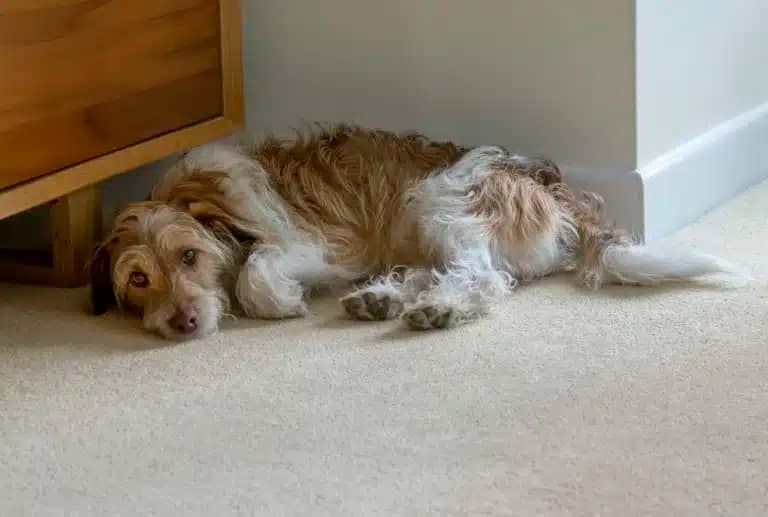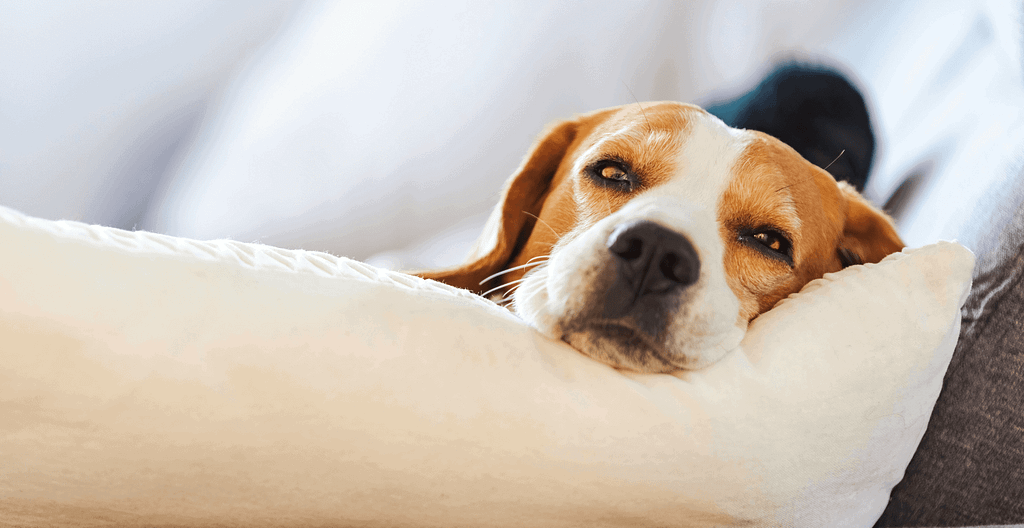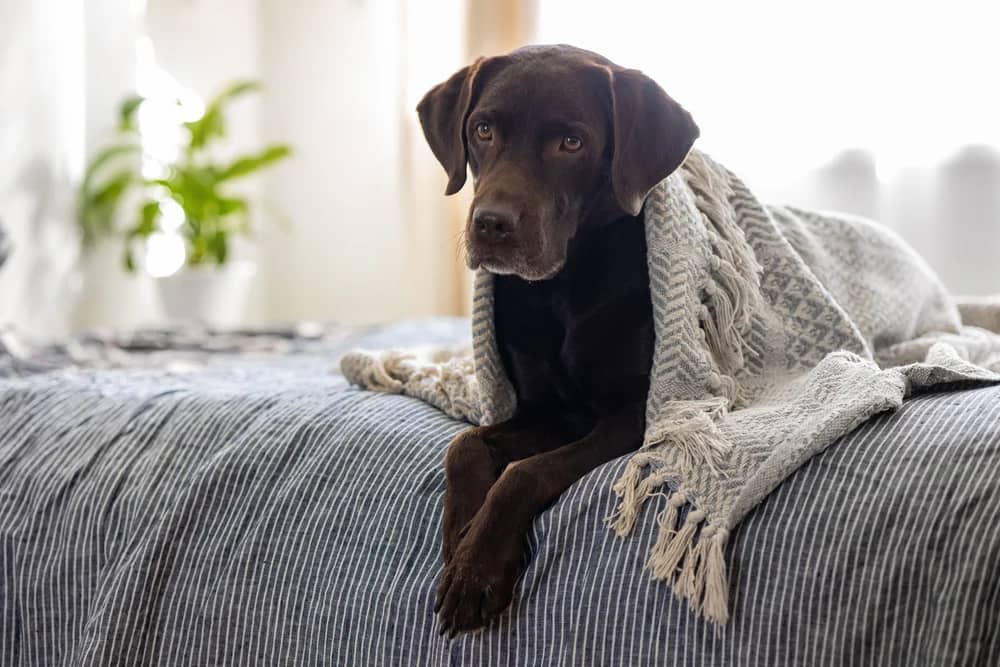Anxiety in dogs is a frequent issue for owners. Various triggers can cause this, like loud noises or separation. One effective solution is a calming environment. This blog will guide you in creating a peaceful space for your pet. It will help provide the comfort they need and reduce dog anxiety.
Understanding Dog Anxiety
Any dog owner needs to know about anxiety before setting up a calming space. Dog Anxiety may be short or long-term. That usually depends on the situation. Signs of anxiety can vary. They can include:
- Restlessness or pacing
- Excessive barking or whining
- Panting or drooling
- Destructive behavior (chewing furniture, scratching doors)
- Hiding or seeking constant reassurance from their owner
- Aggression or defensive behavior
See a vet if your dog exhibits these symptoms regularly. It’s vital to rule out any health issues. Health issues can contribute to anxiety. Once these are addressed, you can focus on creating a calming dog space. This space can boost your dog’s wellness. It helps them feel secure and relaxed.

Why a Calming Dog Space Matters
Dogs, like humans, require a safe and secure space. This environment helps them feel at ease. Anxious dogs benefit greatly from having a retreat. It allows them to decompress and escape stress. A dedicated area provides emotional security. Over time, this can significantly reduce dog anxiety.
Tips for Creating a Calming Dog Space
1. Choose the Right Location
Start by selecting the perfect location for your dog’s calming space. It should be in a peaceful part of your home. Keep it away from noisy, busy areas. A quiet corner of the living room works well. A spare bedroom can also be a great choice. Even a hidden spot under the stairs can provide the seclusion your dog needs.
Ensure your dog can reach their calming space at all times. It’s important for them to retreat when feeling anxious. The location should be quiet enough to shield them from loud noises. Thunder, fireworks, and traffic can create stress for dogs. A serene environment will promote a sense of safety. Regular access to this area will help them cope better.
2. Use Soft, Comfortable Bedding
When designing a calming dog space, comfort is key. Providing a soft bed or blanket is key to your dog’s comfort. If your dog experiences joint pain, an orthopedic bed is ideal. Make sure the bed is large enough for full stretching. Dogs often enjoy snug areas that make them feel safe. Adding a soft blanket can enhance their relaxation. This helps create a warm and inviting space for your pet. Think about adding a covered dog bed or an open crate that feels cozy. Remember to choose washable bedding. A clean space enhances the calming atmosphere.
3. Add Familiar Scents
Dogs’ sense of smell is incredibly powerful. Familiar scents can help ease their anxiety. Adding items that carry your scent, like an old blanket or t-shirt, can make a big difference. This helps create a secure environment for your dog. You might also try calming pheromone sprays or diffusers. These products mimic the comforting scents that mother dogs provide.

4. Provide Noise Control
Dogs with anxiety often react strongly to sounds. A primary aim of a calming dog space is to muffle external noises. Soundproofing the area can be achieved with heavy curtains and soft rugs. Padded walls also help reduce disturbing sounds. You can enhance the environment with white noise machines or calming music. Classical music and tracks designed for dogs can be very effective. Many online playlists feature soothing sounds that promote relaxation for pets.
5. Use Dim Lighting
The right lighting is crucial for a calming dog space. Anxious dogs can be overstimulated by bright lights. Dimming the lights in their resting area can help. Soft, warm lighting or natural sunlight works best. If your dog feels anxious at night, consider using nightlights. Some dogs actually prefer complete darkness during stressful times. Blackout curtains can enhance this calming effect, making your dog feel safe and secure.
6. Provide Engaging Toys and Chews
Distraction is an effective way to alleviate dog anxiety, particularly when they are alone. Providing mental stimulation helps keep their minds active. Give your dog puzzle toys and treat dispensers. Safe chew toys are essential. Kongs stuffed with peanut butter can ease separation anxiety.Rotate the toys regularly to keep your dog interested. This helps prevent boredom and keeps playtime fun. Always pick toys that suit your dog’s chewing style. This ensures safety and maximum enjoyment.
7. Create a Safe, Enclosed Space
For some dogs, having a physical boundary makes them feel secure. You can create this using a crate, dog tent, or playpen. Ensure the crate fits your dog well. They should stand, turn, and lie down easily. Keep the door open for easy access. If a crate isn’t ideal, try a gated section of a room. A cozy nook can work too. Make the space feel both enclosed and inviting. This allows your dog to retreat to their safe zone whenever they need to.
8. Maintain a Calm Atmosphere
The overall vibe of your home can influence your dog’s anxiety. Speak softly and calmly, especially when your dog is in their calming space. Avoid loud noises and harsh commands, which can make anxiety worse. Praise and reward your dog when they go to their calming space. This encourages them to seek comfort. Set up regular routines, such as feeding and walking times. These routines boost your dog’s sense of security. Consistency is key in reducing anxiety. Dogs that have trouble with change benefit from this. A stable schedule helps them feel safe.
Conclusion
Creating a calming dog space is a kind act for an anxious pet. It provides a safe, quiet, and comforting environment. This can significantly reduce dog anxiety. By doing so, you improve their quality of life. A few simple steps can transform their area into a peaceful retreat. This sanctuary helps your dog feel more secure and happy every day. A calming space is essential for their well-being.
Also Read: The Benefits of Massage Therapy for Dogs
